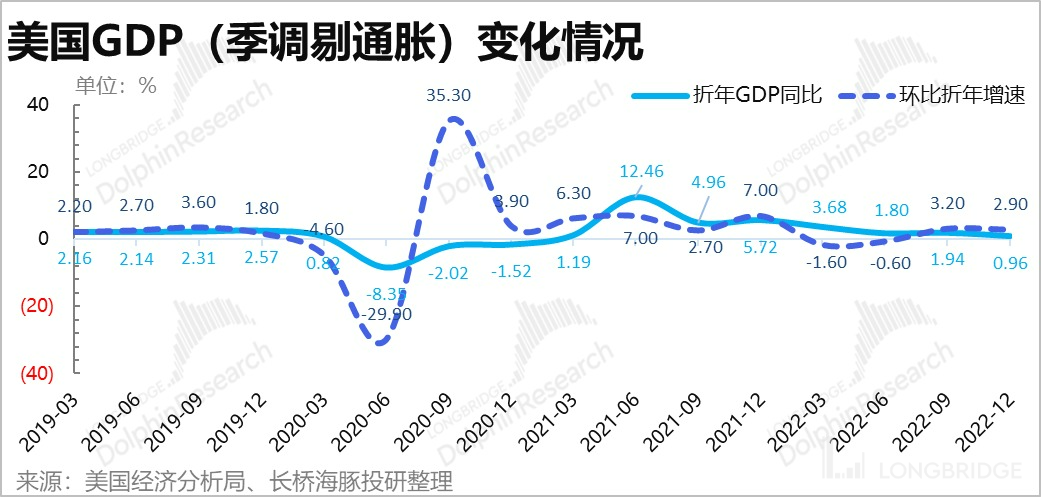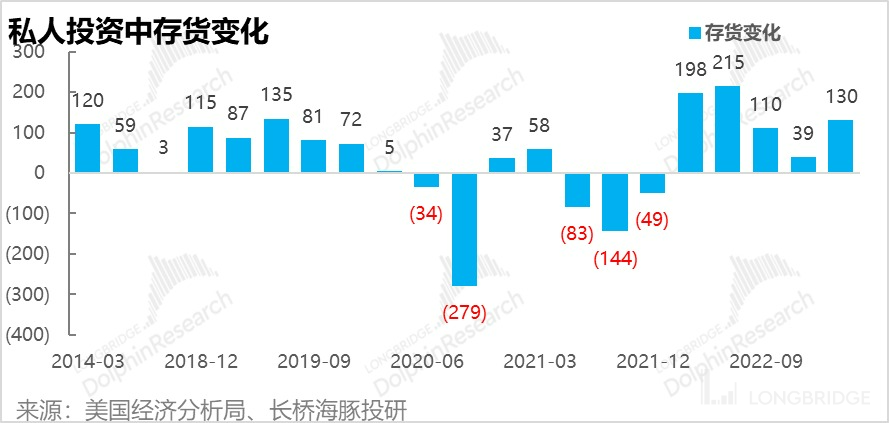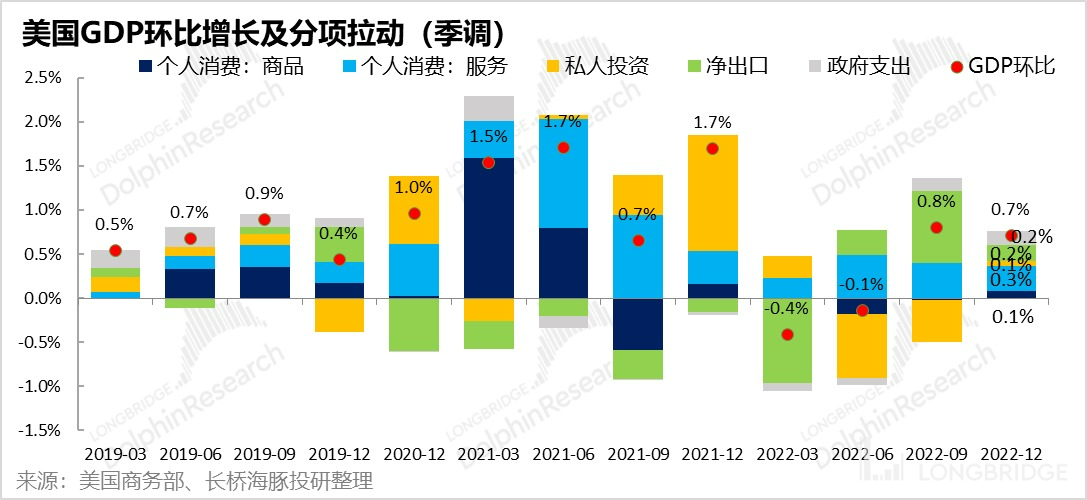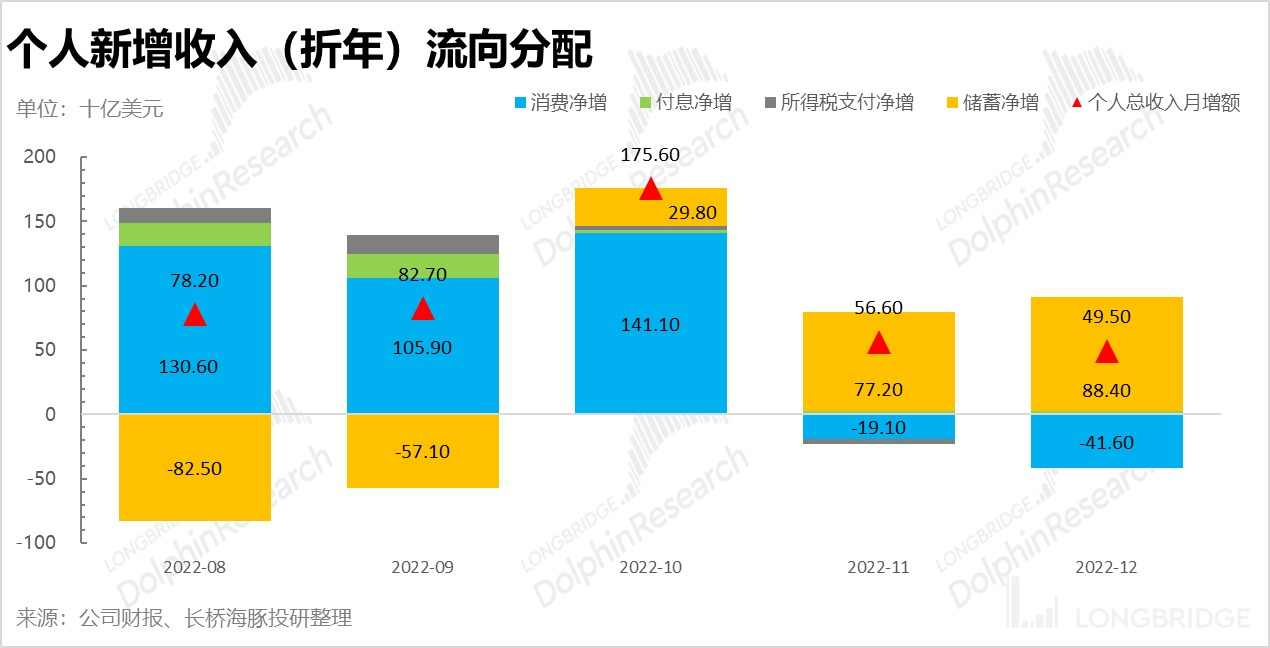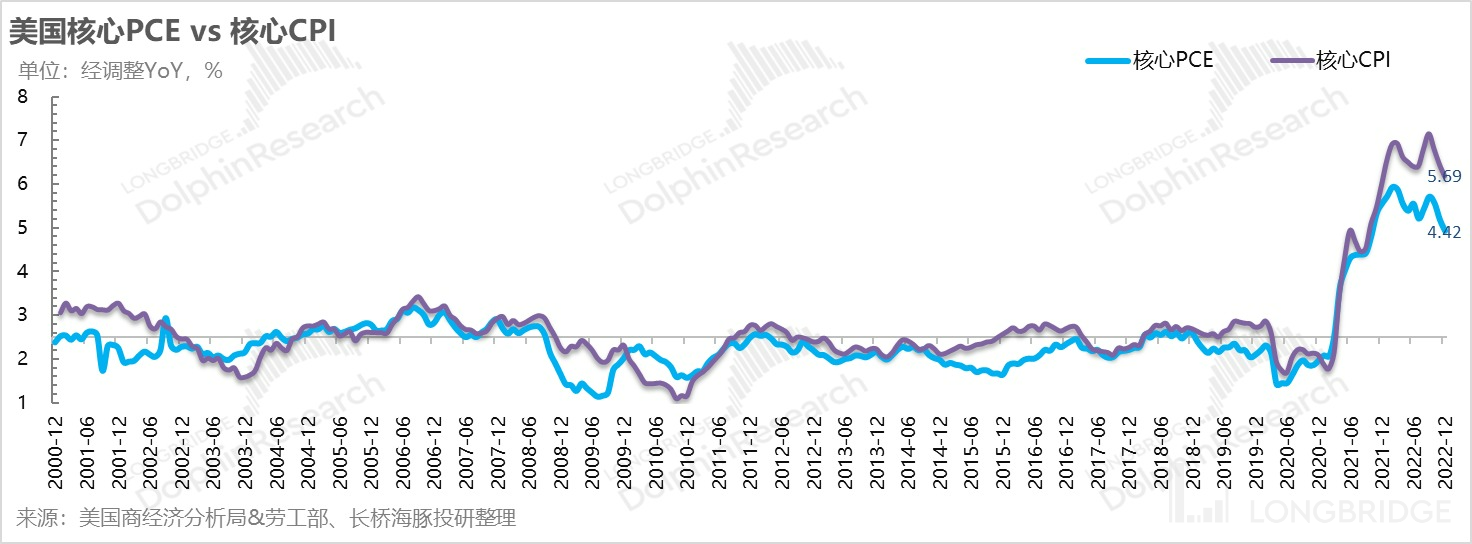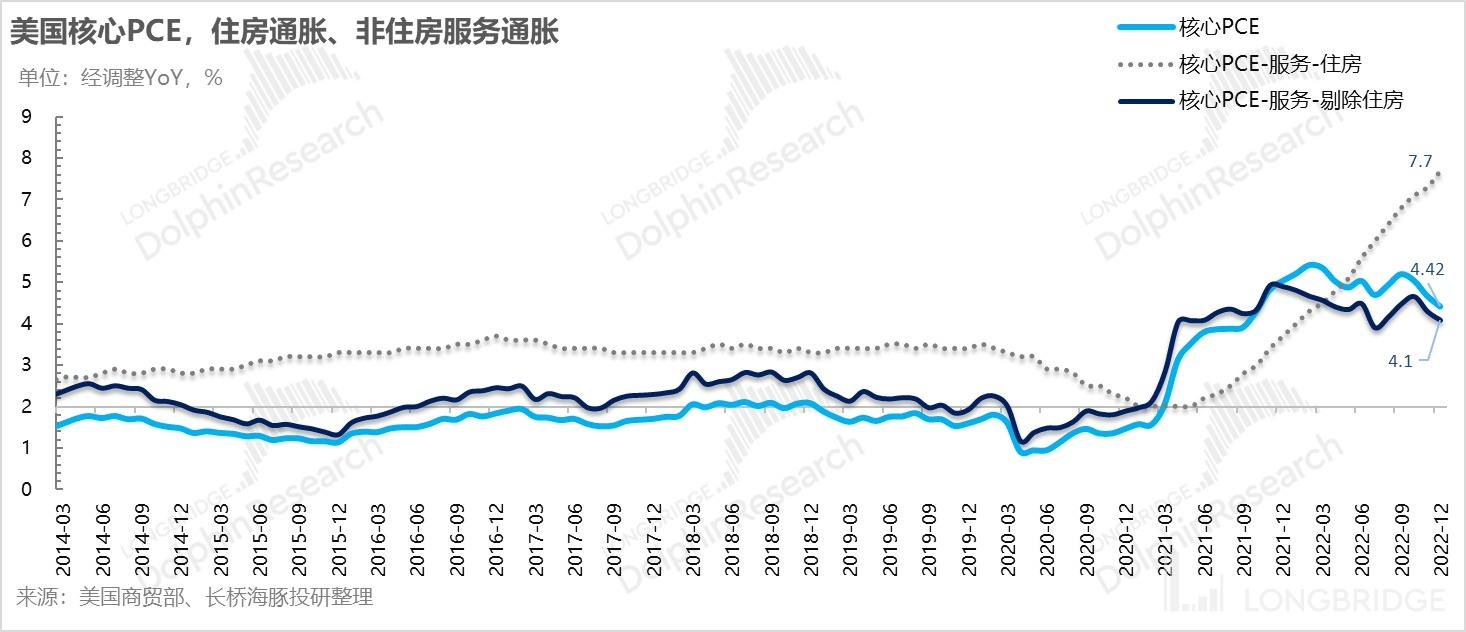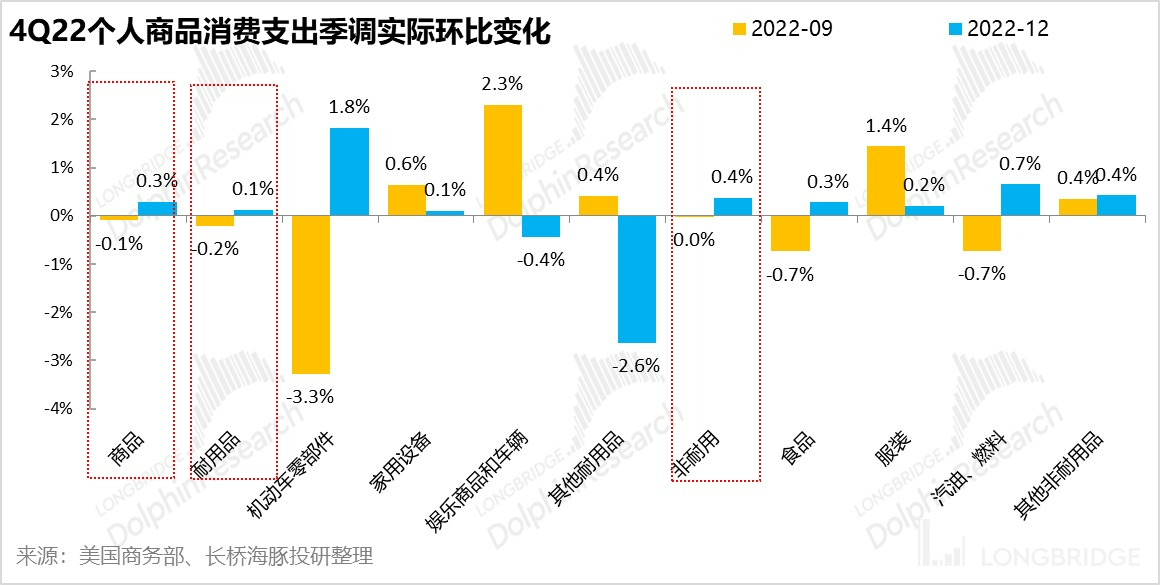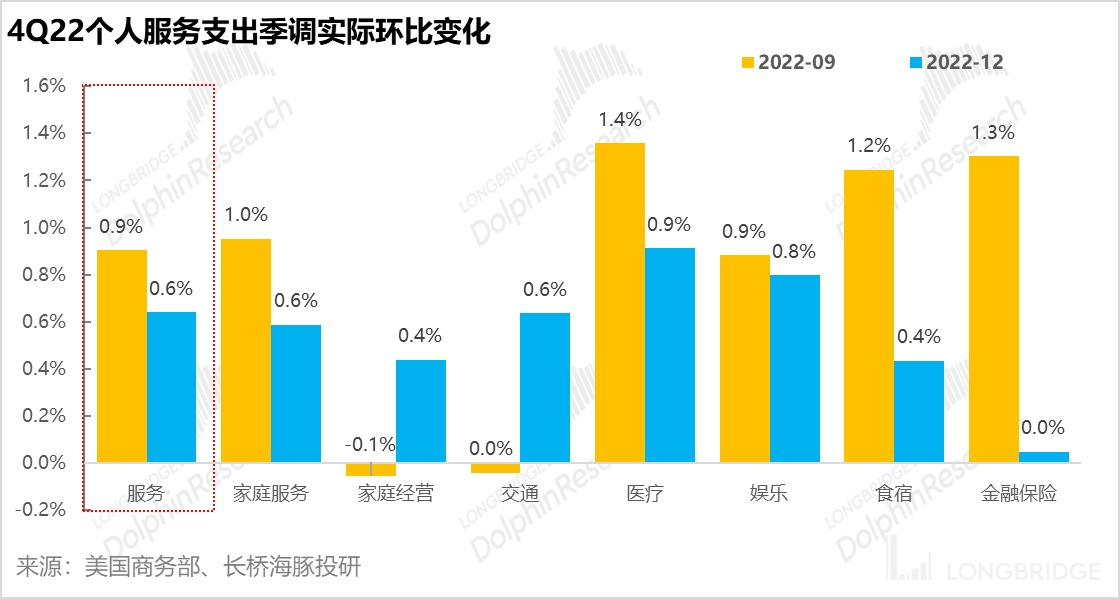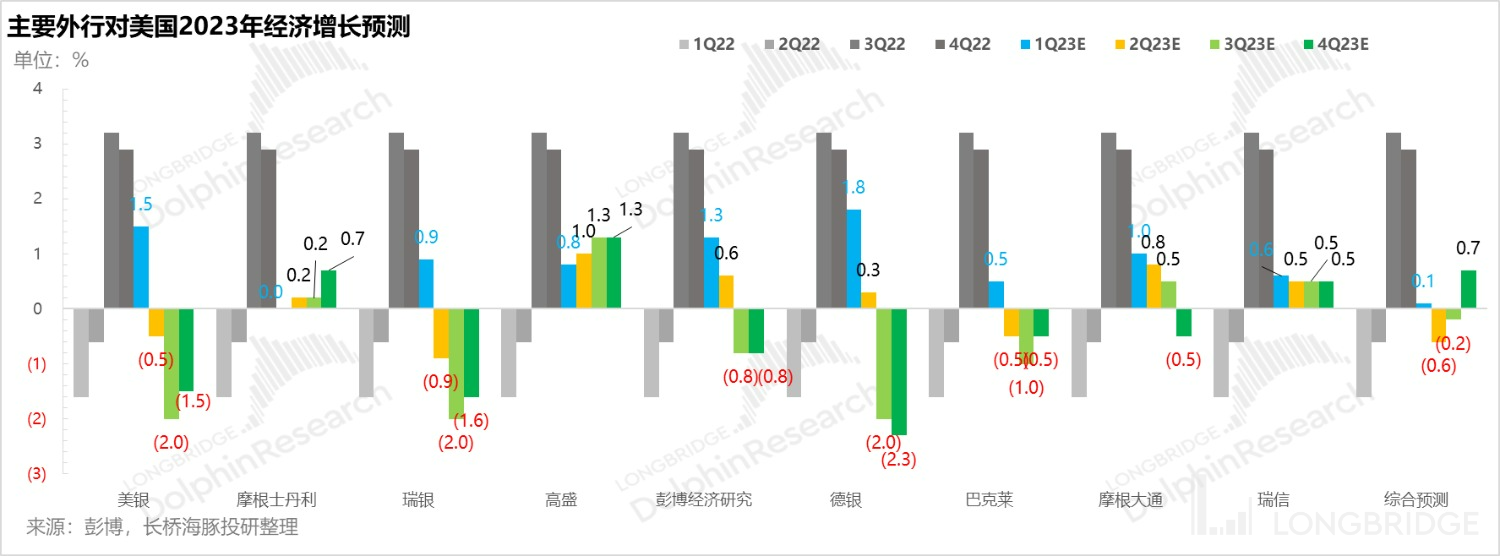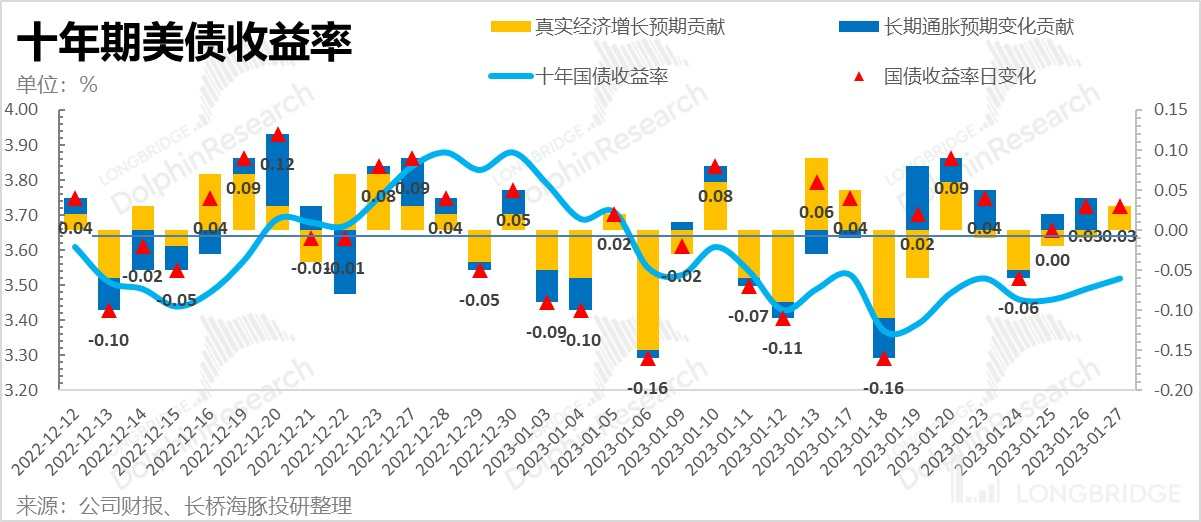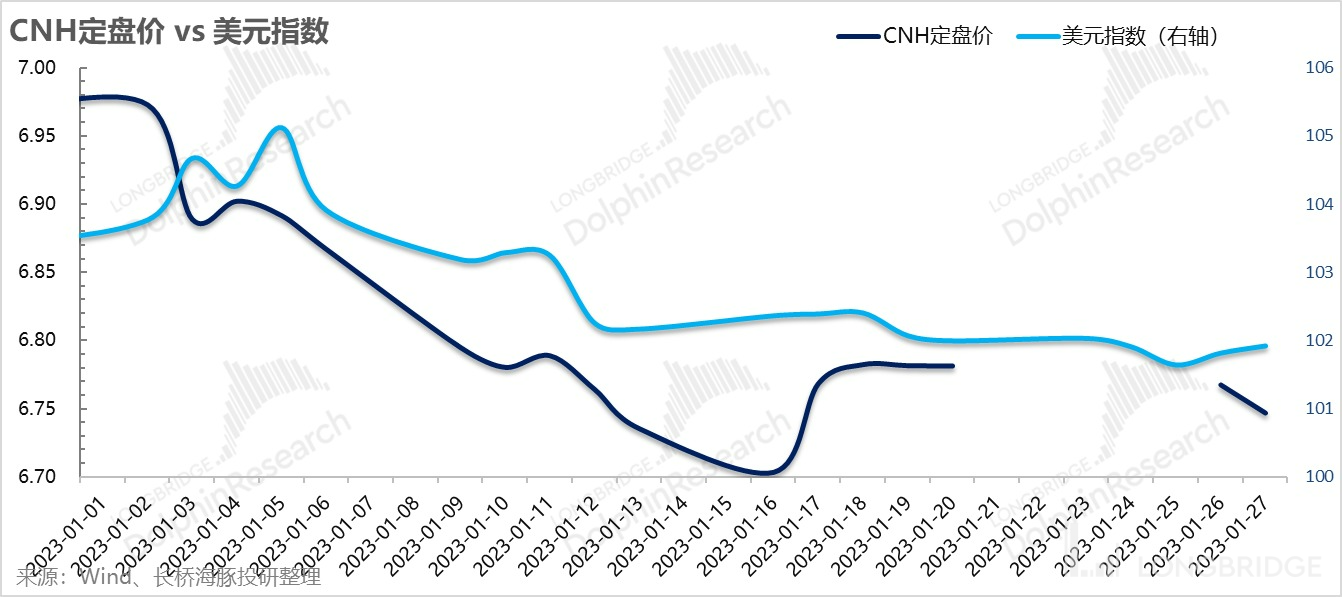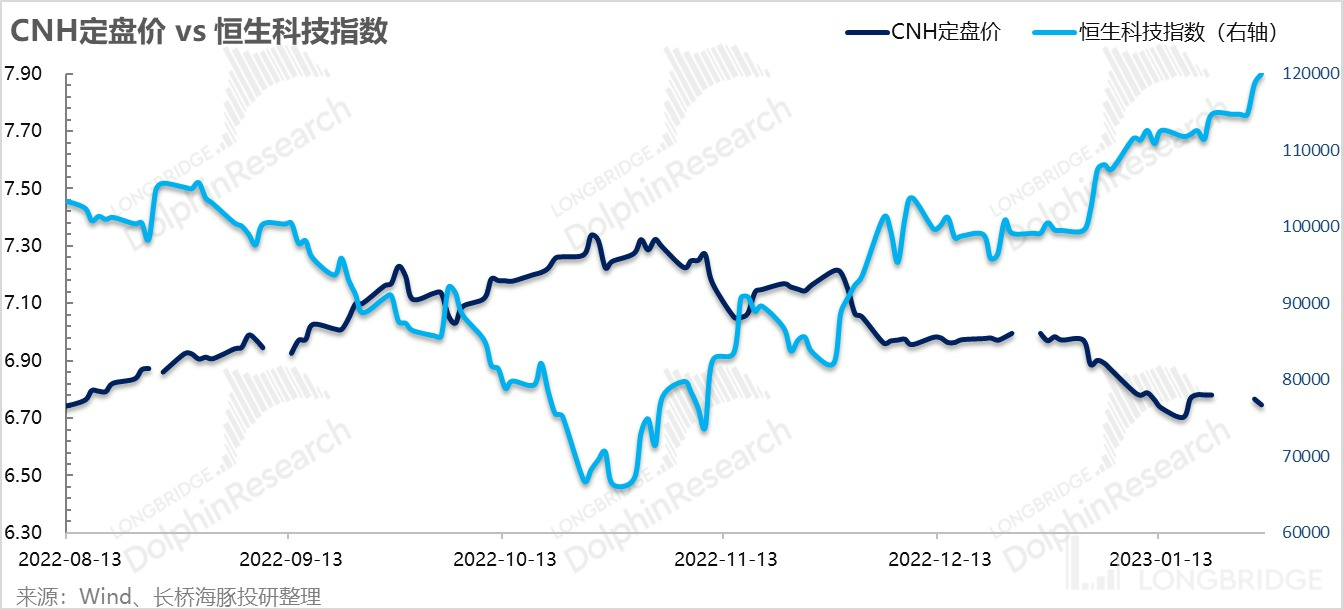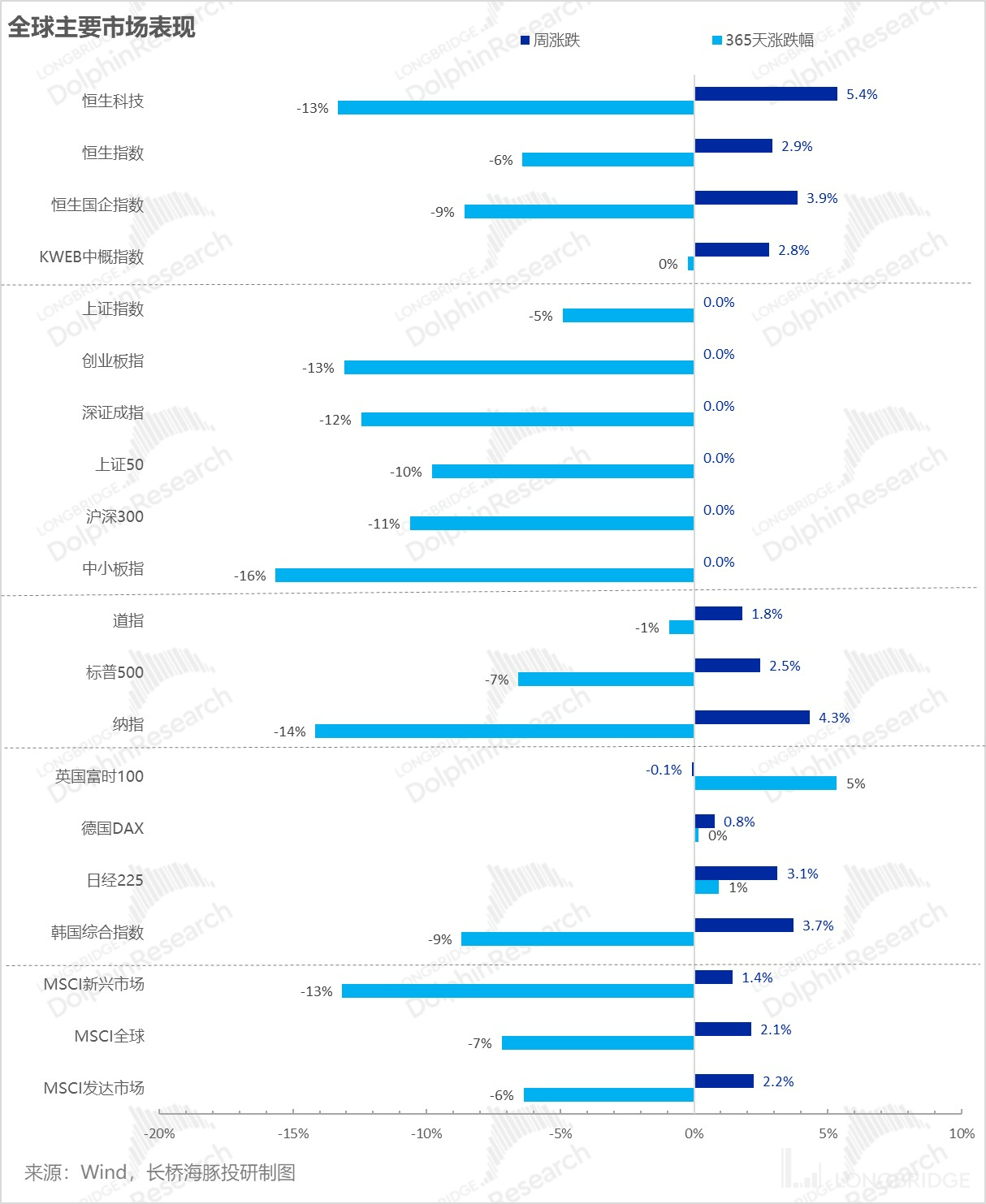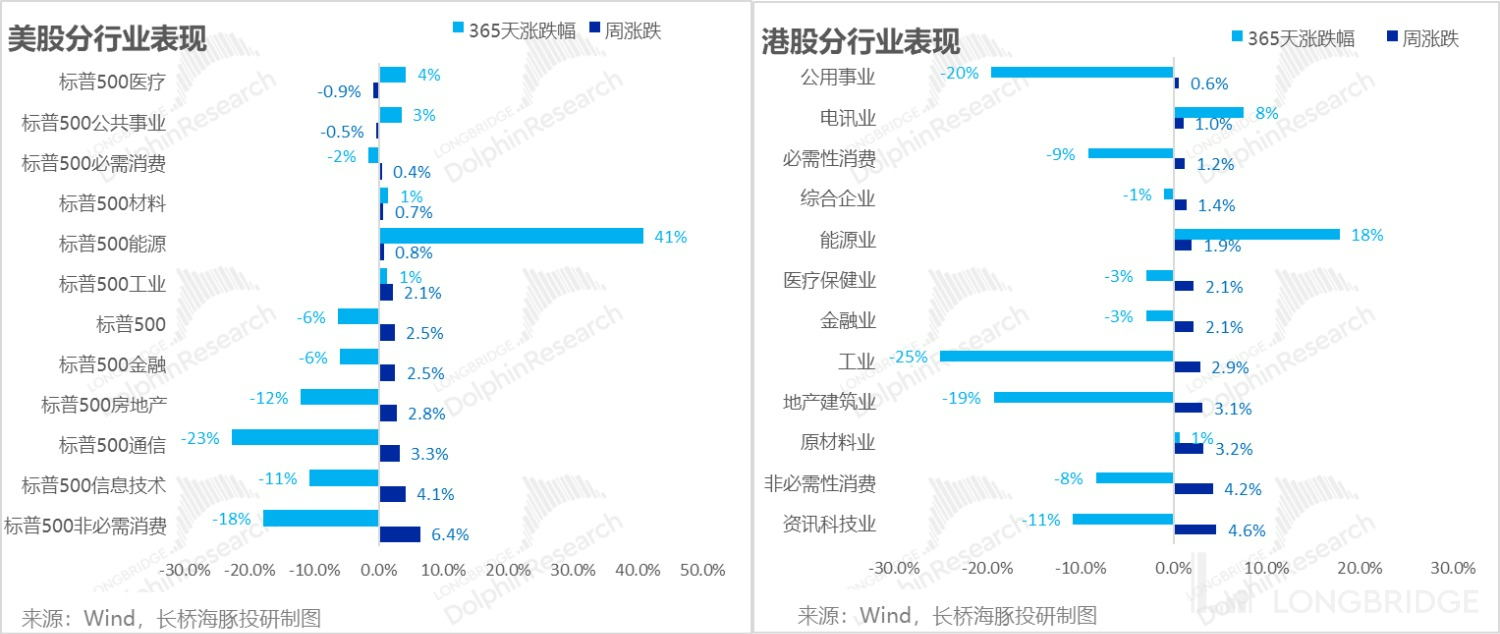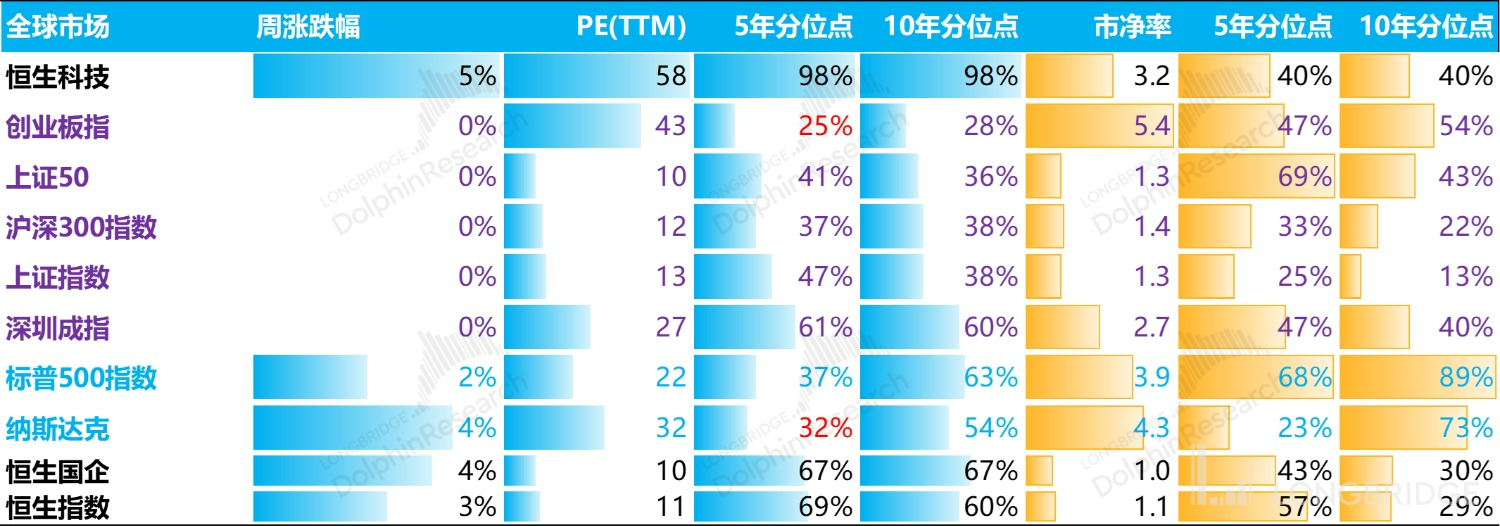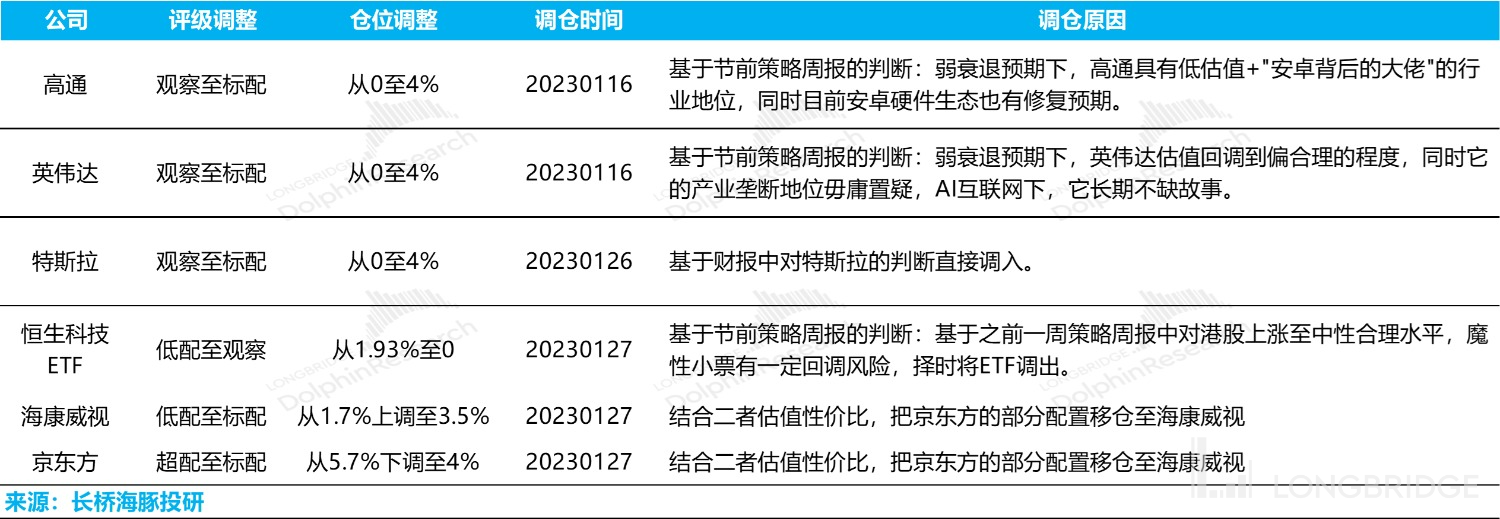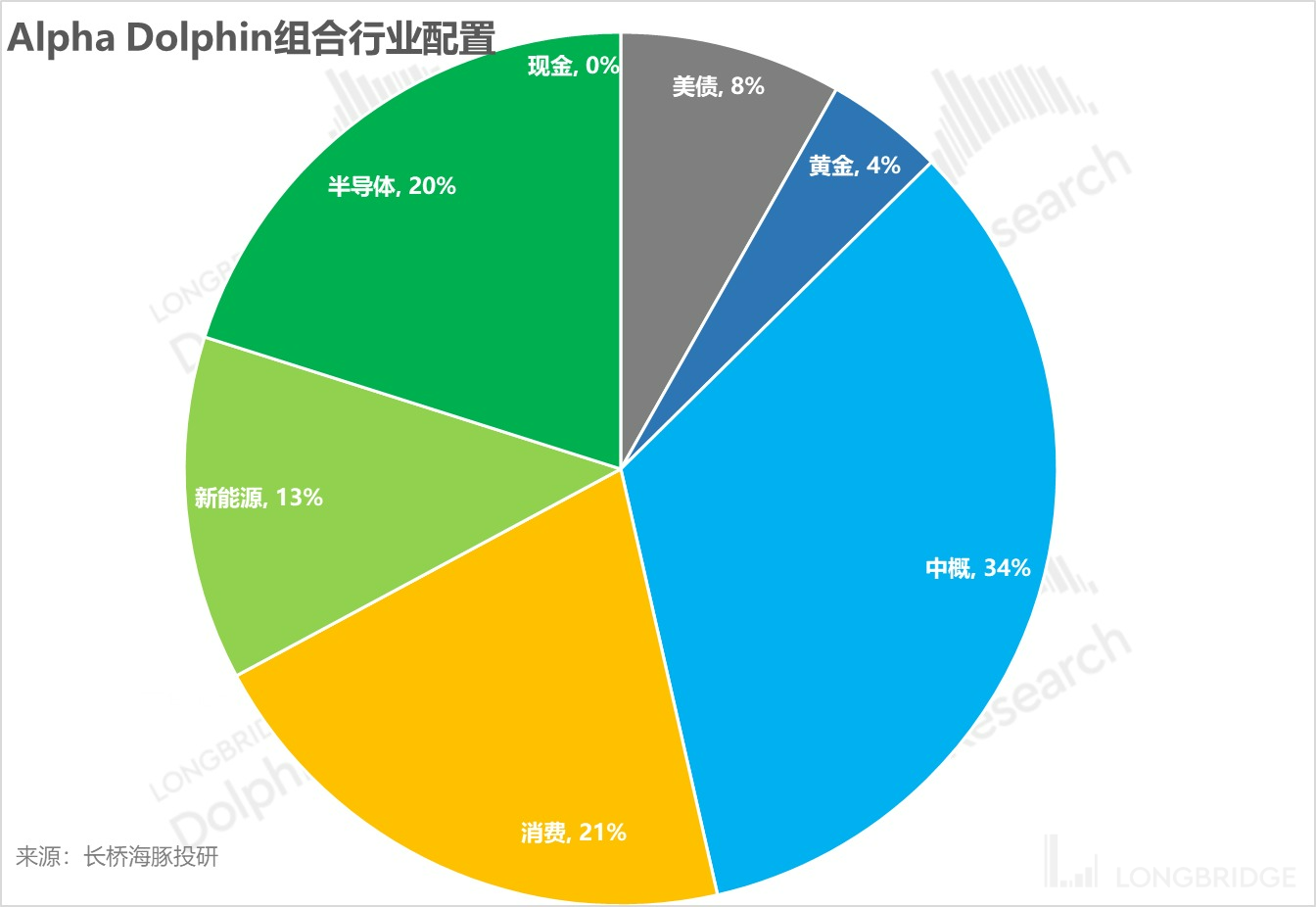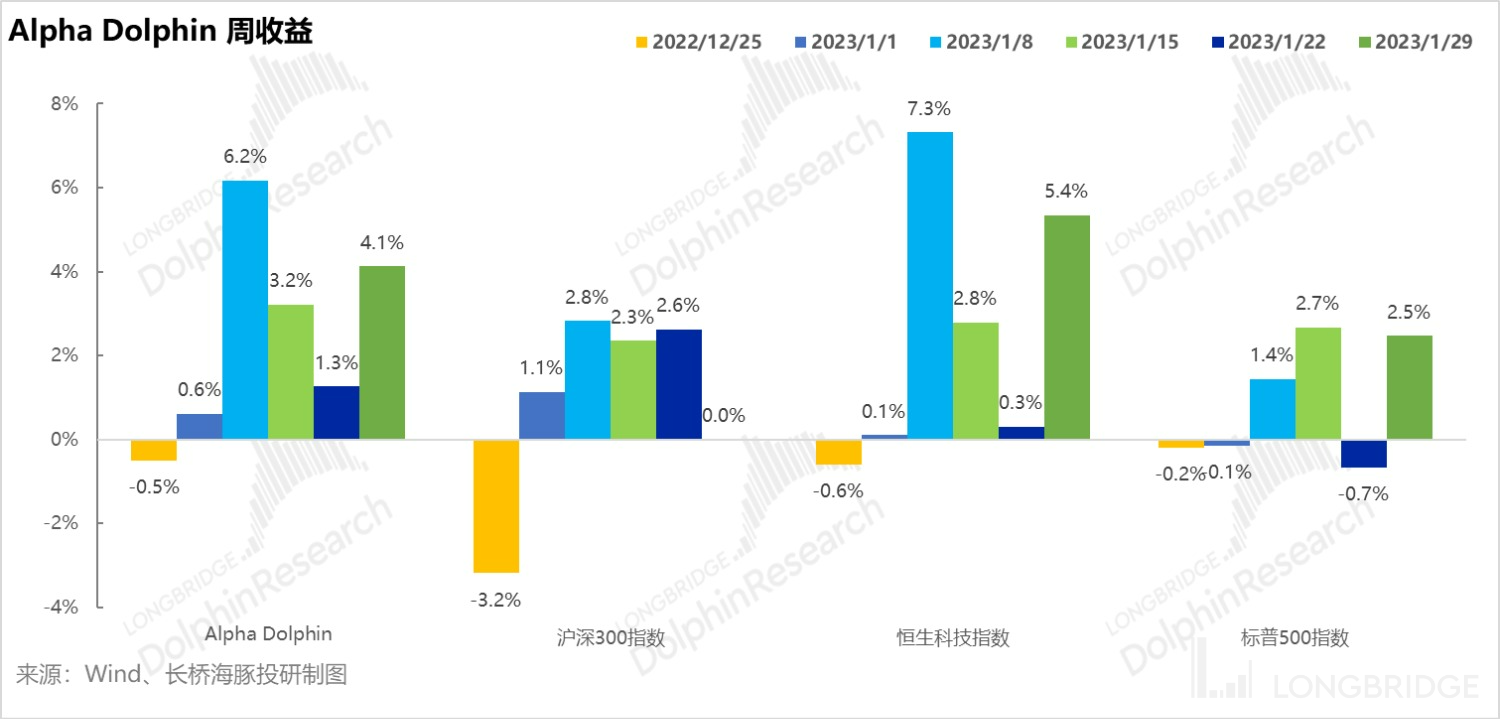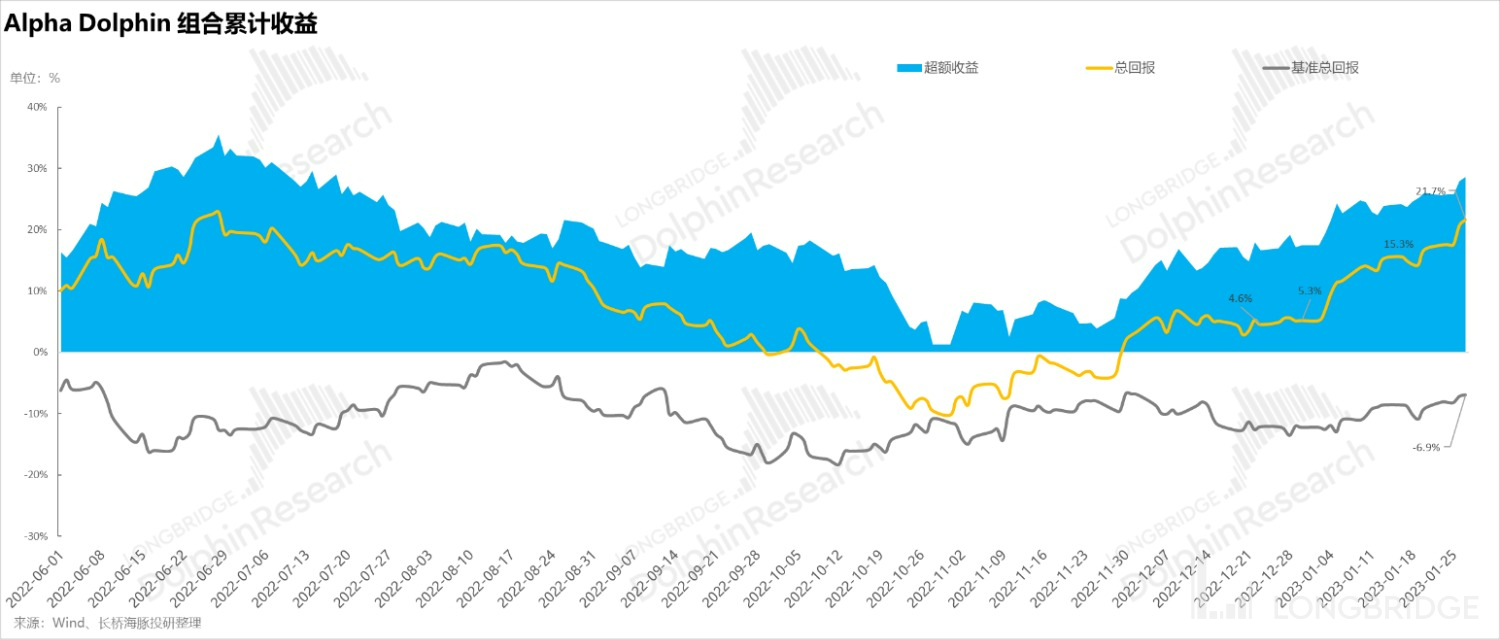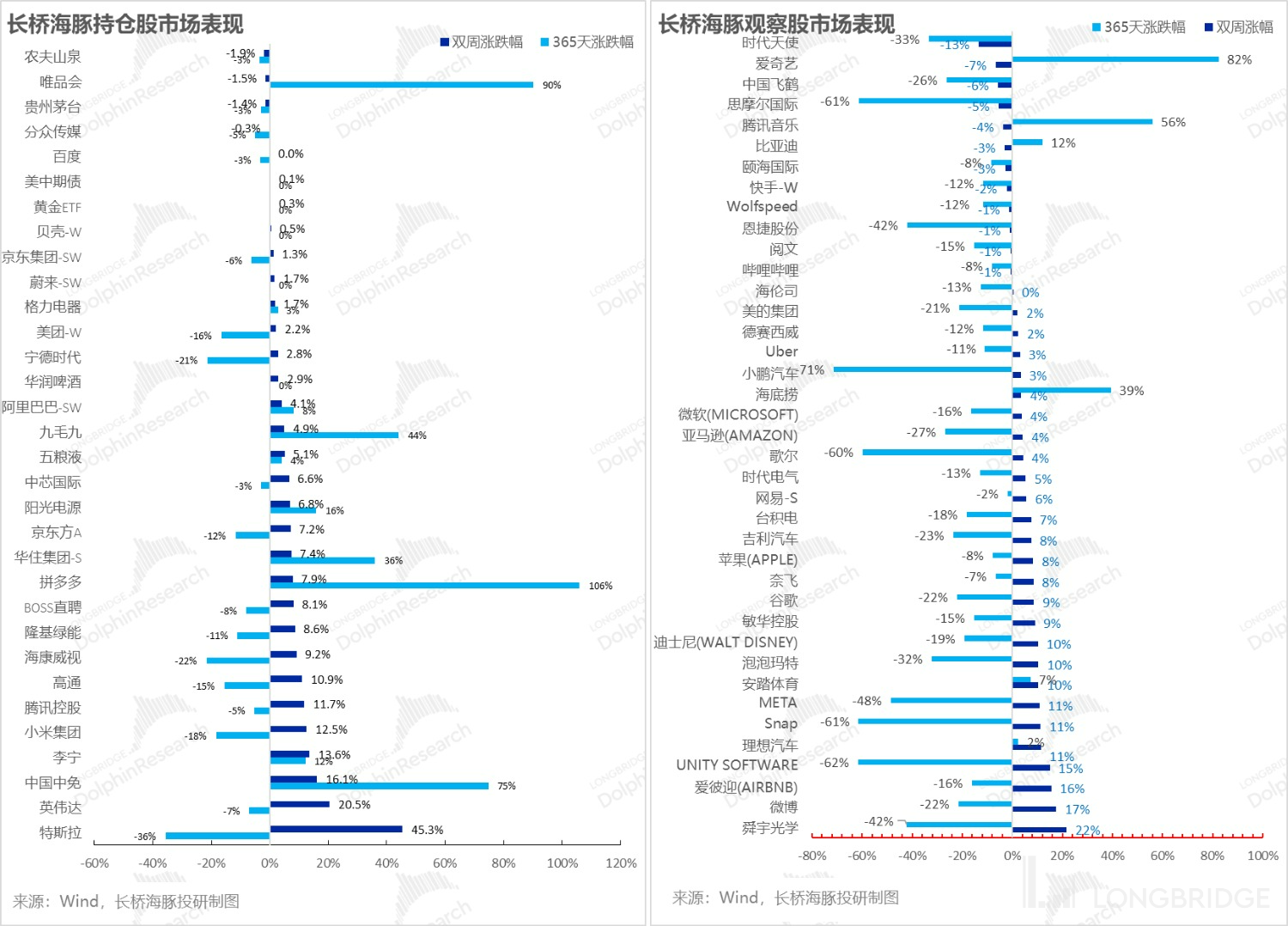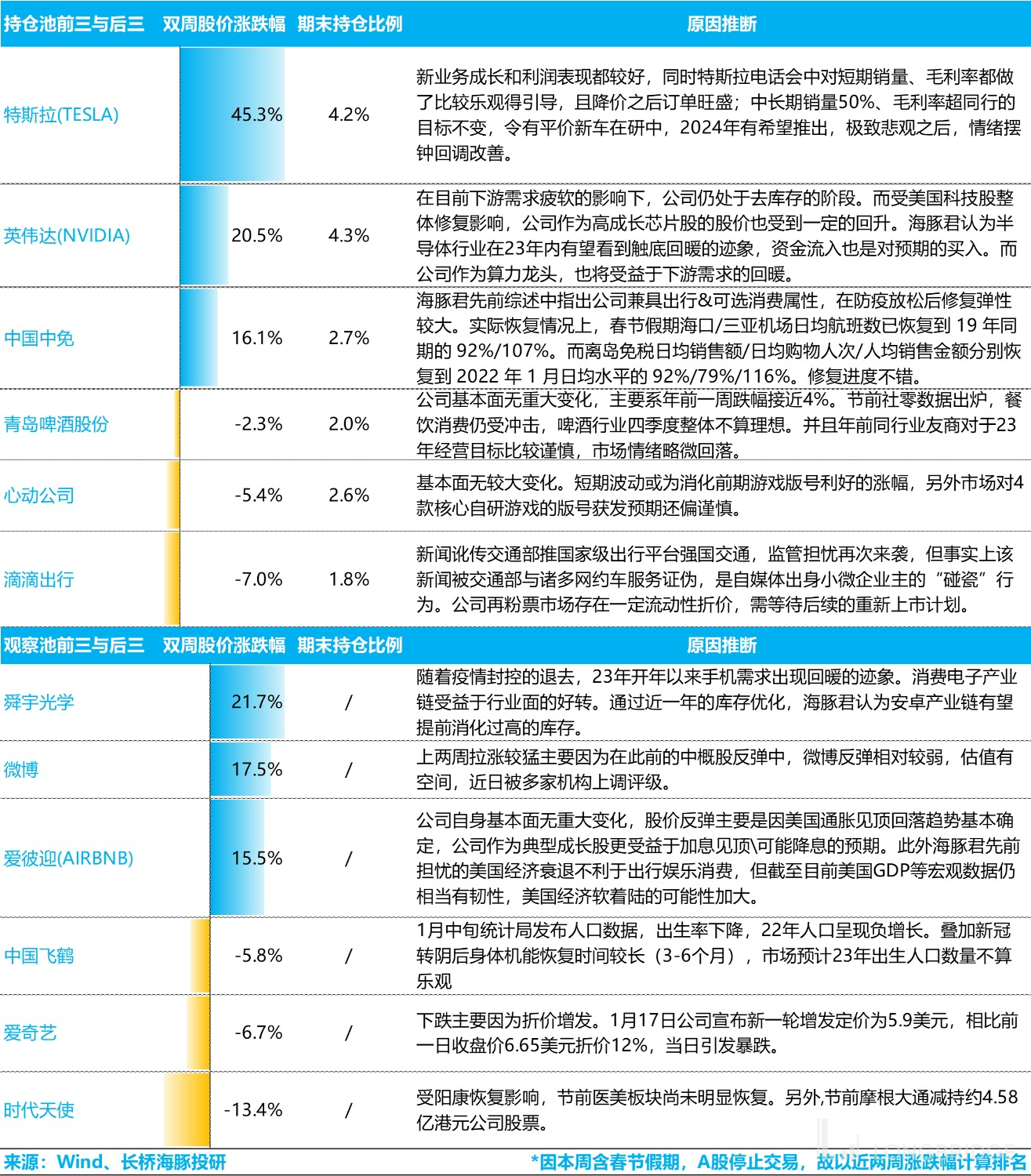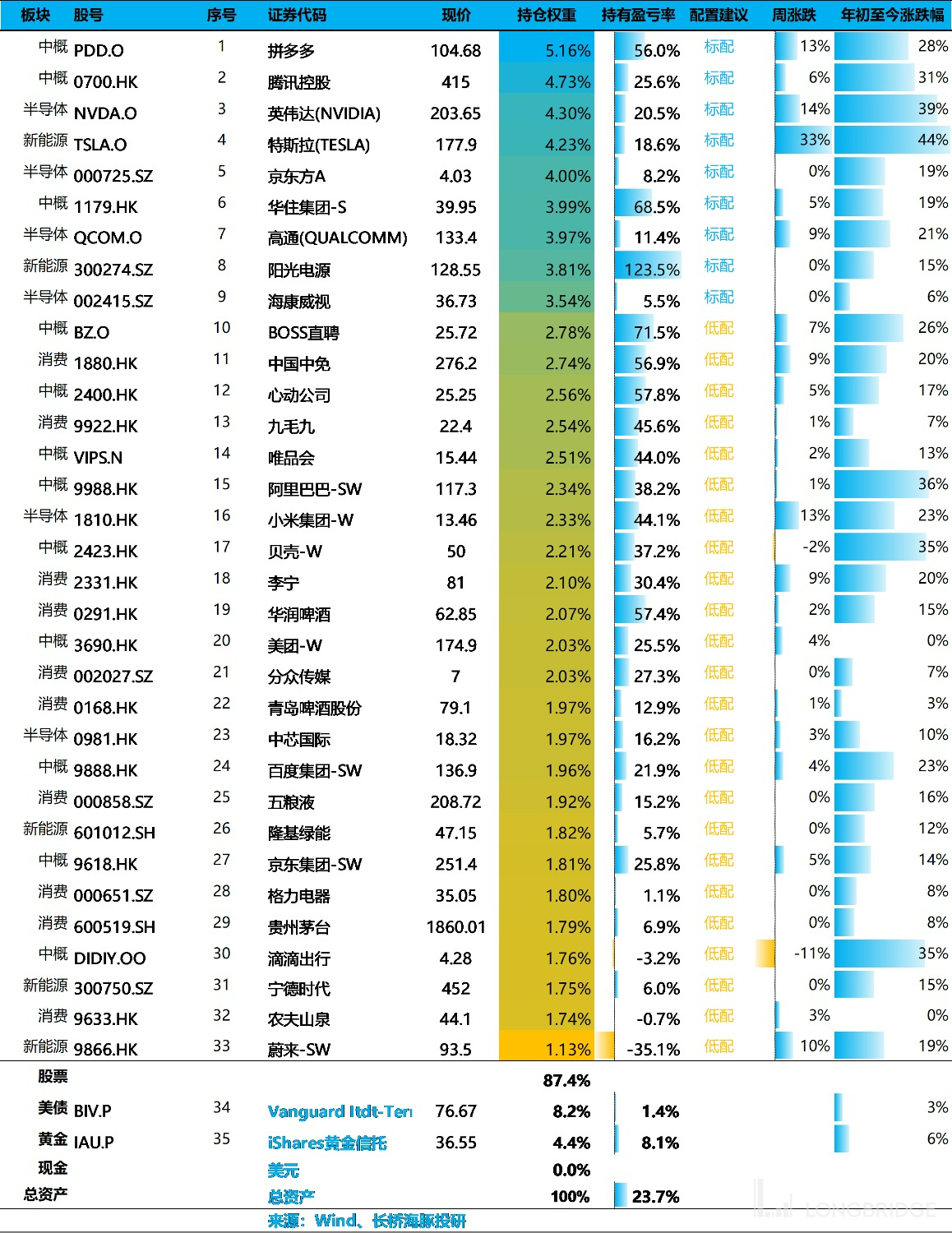A big bullish candle to boost faith, is Tesla leading US stocks to make a comeback?
Hello, everyone. I'm Dolphin Analyst, and the weekly market portfolio strategy is here again. Key information is as follows:
-
U.S. Fourth-quarter GDP is still stubbornly holding up, mainly due to the unexpected surprise brought by the increase in inventory in the energy and chemical industries in private investment, reflecting the economic resilience brought by U.S. resource endowments in this cycle.
-
Looking ahead, neither of these factors is sustainable. Changes in the distribution tendency of added income for residents mean that recession is inevitable, but the small recovery in commodity consumption and the out-of-period fall in PCE all tend to support the scenario of "weak recession" in Dolphin Analyst's previous strategy weekly report.
-
If it is a weak recession, combined with the current market and valuation percentile, the Nasdaq and the domestic ChiNext index still seem to have some price-performance ratio in the short term.
-
Based on Dolphin Analyst's judgment of the weak recession in the U.S. economy in the previous strategy weekly report, the portfolio promptly added positions to Qualcomm and NVIDIA, the semiconductor leaders in Dolphin Analyst's observation warehouse, and added TESLA based on the financial report comment. These adjustment orders all contributed good returns in a single week.
-
In the two weeks of January 22 and January 29, Alpha Dolphin portfolio increased by 1.3% and 4.1%, respectively, obviously outperforming the S&P 500 (-0.7%, +2.7%). From the beginning of the portfolio test to the end of last week, the absolute return of the portfolio was 22%, and the excess return compared to the benchmark S&P 500 index was 29%.
The details are as follows:
I. Can the United States really have a weak recession?
In the pre-holiday strategy weekly report "U.S. Stock "Danger" "Crisis" How Far Is It?", Dolphin Analyst mentioned that the deep and shallow recession scenarios in the United States have a huge impact on investment rhythm, and based on the current data evolution, it further points to a weak recession scenario.
And during the Spring Festival holiday, several key data are pointing to Dolphin Analyst's judgment. Let's take a look:
1.1) Unexpected inventory input and strong GDP
After the "single-legged" service consumption topped the YoY growth of 3.2% in the third quarter's GDP, U.S. fourth-quarter GDP did not experience an obvious decline expected by the market, with a QoQ annulized growth rate of 2.9%.
That means that if the YoY growth momentum of this quarter is maintained every quarter for the next year, the annualized growth rate of U.S. GDP can still reach nearly 3%, and recession requires sustained negative growth in the economy to be considered a recession.
 Looking closely at the drivers of GDP growth rate, the sub-sectors that truly made significant contributions besides service consumption for domestic demand are the increase in inventory in private investment items.
Looking closely at the drivers of GDP growth rate, the sub-sectors that truly made significant contributions besides service consumption for domestic demand are the increase in inventory in private investment items.
According to the official explanation, the increase in inventory is mainly due to industries such as petroleum and mining having a greater increase in inventory. Dolphin Analyst believes this aspect can be more understood as the risk resistance capacity brought about by the current endowed oil resources in the United States. However, while other private investment items are marginally declining, relying solely on the increase in inventory in some industries to support it does not have strong persistence.
In the most critical service consumption sector (which accounts for more than 44% of GDP composition weight), although it is still the main driver of economic growth, the contribution rate has marginally decreased.
Other sectors such as government consumption and investment are more counter-cyclical, while the higher net exports contribution is mainly because the domestic demand was too good previously, causing a massive increase in imports. Now that the demand has fallen, the trade deficit has decreased. However, the United States is not an export-driven economy. The real endogenous driving force of economic growth still depends on the US consumption and private investment.
Regarding the outlook for the two key items of consumption and investment, the US economy should still be trending downward: because the current increase in inventory is difficult to sustain. Especially in private investment, except for the increase in inventory, most non-residential projects in fixed asset investments are deteriorating marginally. Although service consumption still has a considerable contribution, it is currently the main offensive direction of the US Federal Reserve in "fighting inflation."
Moreover, currently looking at the trend of marginal income flow distribution from residents, after savings have been depleted to historical lows, each month for the past two months, Americans have started to tilt towards savings again in their distribution of newly added income, and the consumption rate has turned into a net decrease since November.
In addition, the other key observation index of weak recession expectations is that the economy has not "drooped" yet, and inflation has already entered a downward trend. After CPI dropped unexpectedly in December, PCE, which has a high service consumption component, also stopped following with the same synchronization as CPI. Adjusted for seasonality, the YoY core PCE in December was 4.4%.
This means that the "service inflation" sticky indicator, which Dolphin Analyst has been concerned about and has been paying attention to, is also following the expected downward trend, which can alleviate the market's expectation of the duration of high interest rates from the US Federal Reserve. Furthermore, the figure below shows that, in addition to housing, service items with higher relevance to manpower in the core PCE service touched a high point in October and stabilized in a downward trend in November and December.

1.3) Slow Recovery of Commodity Consumption
Although US commodity consumption has been shrinking on a month-on-month basis, Dolphin Analyst noticed that gasoline retail prices dropped to around $3.5 per gallon at the end of February 2022 when the Russian-Ukrainian conflict began. In the fourth quarter, fuel consumption of motor vehicles and gasoline rebounded to some extent, driving a rare month-on-month increase in US commodity consumption.

Service consumption has significantly weakened. Except for the NGO's procurement, which saw decent growth on a month-on-month basis, the growth of family-owned business should be primarily related to the upward trend of housing costs.
In the true sense, transportation should be the main high-growth service in the fourth quarter (corresponding to the focus on Uber's individual stocks, but Uber has interference from Eats takeout).
Other entertainment (corresponding to individual stocks - Disney, Netflix) is still relatively strong, and the rate of decline in food and accommodation (corresponding to Airbnb's stock) is significantly faster.

From an overall perspective, since the recession is essentially expected, the most critical information released by GDP growth in the fourth quarter is that the US economy appears to be very resilient. Both the recovery of commodity consumption on a month-on-month basis and the unexpected increase in inventory indicate that although recession will come, it is likely to be a "shallow" recession.
From the perspective of the current expectations of the major outsiders, except Goldman Sachs (which is obviously optimistic) and Credit Suisse is judging economic growth, most of them believe that there will be a significant recession in mid-2023, but there is a difference in the degree of recession.

II. Global Asset Rebound under Weak Recession Trading Logic
Under weak recession expectations, US short-term bond yields have remained basically unchanged, but long-term bond yields have risen slightly. Among them, the contribution of the rebound in long-term inflation expectations and long-term real economic growth expectations was made, but the contribution of the latter appeared after the PCE was released.
 US weak decline + China strong repair, correspondingly on the exchange rates between the two countries, the US dollar index and the RMB exchange rate move rarely in the same direction - the US dollar index is on the rise while the offshore RMB is stronger than the US dollar, and since RMB has been strengthening since the beginning of the year, offshore RMB assets have celebrated for a while.
US weak decline + China strong repair, correspondingly on the exchange rates between the two countries, the US dollar index and the RMB exchange rate move rarely in the same direction - the US dollar index is on the rise while the offshore RMB is stronger than the US dollar, and since RMB has been strengthening since the beginning of the year, offshore RMB assets have celebrated for a while.


Since the degree of decline may be weaker than expected, although the discount rate represented by the 10-year US Treasury bond yield has slightly increased, the medium to long-term EPS repair expectations have led to a strong rebound in the global market last week, especially the severely declining Nasdaq over the past year.

Looking at the different sectors, the commonality between US and Hong Kong stocks is that stocks with larger declines and more long-term cash flow expectations have more significant recoveries in their stock prices.

From the perspective of Dolphin Analyst's main market recovery extent, if there is no EPS super unexpected collapse, A-share's GEM and the Nasdaq's five-year valuation percentiles are still relatively low, especially considering that A-share's GEM focuses on energy and semiconductors, short-term attention can be paid to the performance of GEM.

III. Alpha Dolphin Portfolio Rebalance
Based on Dolphin Analyst's judgment on the advantageous position of weak US stocks and individual stock logic in the semiconductor stock pool covered in last week's portfolio strategy ("How Far is the Turnaround of Crisis in US Stocks"), Dolphin Analyst has brought Qualcomm and NVIDIA into the portfolio while timely removing the Hang Seng Science and Technology ETF based on the risk of certain small cap stocks' over-rally and subsequent decline.
At the same time, based on Dolphin Analyst's latest financial report analysis ("Tesla's Story is Reshaping, a Test of Faith Has Come!"), Tesla was added to the portfolio on the day it was judged. See below for details: After adjustment, there is currently no cash in Alpha Dolphin, but there are still cash-like assets such as US bonds, waiting for opportunities to add positions later.
The current asset class and sector weights are as follows:

IV. Alpha Dolphin Portfolio Returns
In the two weeks from January 22 to January 29, the Alpha Dolphin portfolio increased by 1.3% and 4.1%, respectively, outperforming the S&P 500 (-0.7%, +2.7%).

From the start of the portfolio test to last weekend, the absolute return of the portfolio was 22%, and the excess return compared to the benchmark S&P 500 index was 29%.

V. Performance of individual stocks: semiconductor and clean energy + pure US stocks are back
Although the performance of the Dolphin Analyst's coverage pool was not bad in the past two weeks, the stocks with the highest gains were generally those that were based on valuation repair logic, such as clean energy (Tesla), semiconductors (Nvidia, Sunny Optical), Airbnb, and Unity.
Consumer stocks showed obvious polarization, while the performance of Chinese concept stocks was in the middle, neither high nor low, which was significantly different from the previous trend of consumer and Chinese concept stocks leading the way.

VI. Distribution of portfolio assets
After the latest adjustment, Alpha Dolphin portfolio has a total of 33 stocks, of which 9 are standard allocation, 24 are low allocation, and the rest are allocated to gold and US bonds to improve the utilization of cash. As of last weekend, the asset allocation and equity asset holding weight of Alpha Dolphin are as follows:
====

Please refer to the following articles of the Dolphin research group weekly report:
- "How far is the turning point of the US 'dangerous crisis'?"
- "The US stock market did not have a red New Year, but the hammer performance is close at hand?"
- "Peel off the roots of the stagnant growth of the US stock market"
- "CPI has fallen back, why is the Fed still hovering like this?"
- "Is it easy to eliminate service inflation? Beware of market over-correction"
- "Has Hong Kong stocks finally got a backbone? Can the independent trend go further?"
- "The darkest moment before dawn: Is mentality important in darkness or dawn"
- "US stocks 'play back' reality, how long can emerging markets bounce?"
- "Does the world really have valuation repair now? There is still a test of performance"
- "China's asset violence rises, why are China and the United States different?" 《Are Amazon, Google, and Microsoft Falling Stars? More Meteor Showers in the US stock market?》
《Unreliable "Strong US Dollar" GDP Growth Behind Expected Policy Shift?》
《Time to Test "Steadiness" again: Southern Acquirers vs Northern Runaways》
《Slower Rate Hike? Dream Defeated Again》
《 Sad Q2: Loud "Eagle Voice", Difficult Collective Crossing》
《Falling, Doubtful, Is There Still Hope for Reversal?》
《 Fed Violently Hammers Inflation, Domestic Consumption Opportunities Arise?》
《 The Global Market Falls Again, and the US Shortage of Workers Is the Root Cause》
《Fed Becomes the Top Bear, the Global Market Collapse》
《A Bloodbath Caused by a Rumor: Risks Never Disappear, Searching for Sugar in Glass Shards》 [ "《美国向左、中国向右,美国资产的性价比又回来了》", "《裁员太慢不够接盘,美国还得继续 “衰”》", "《美股式 “丧事喜办”:衰退是好事、最猛加息叫利空出尽》", "《加息进入下半场,“业绩雷” 开幕》", "《疫情要反扑、美国要衰退、资金要变卦》", "《眼下的中国资产:美股 “没消息就是好消息”》", "《成长已然狂欢,但美国就一定是衰退吗?》", "《2023 年的美国,是衰退还是滞涨?》", "《美国石油通胀,中国新能源车做大做强?》", "《美联储加息提速,中国资产机会反而来了》", "《美股通胀又双叒爆表,说好得反弹能走多远?》" ] 《This is the most down-to-earth way, the Dolphin Investment Portfolio is launched》
Risk Disclosures and Statements in this Article: Dolphin Investments Research Disclaimer and General Disclosures




